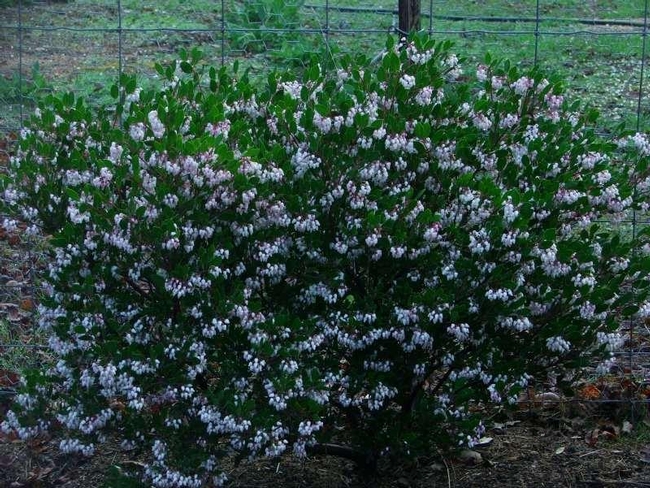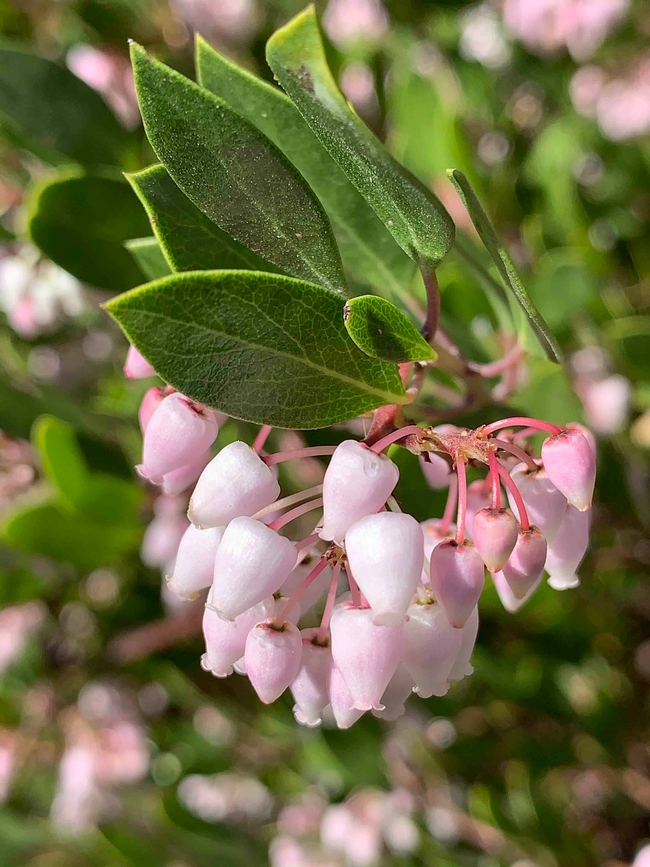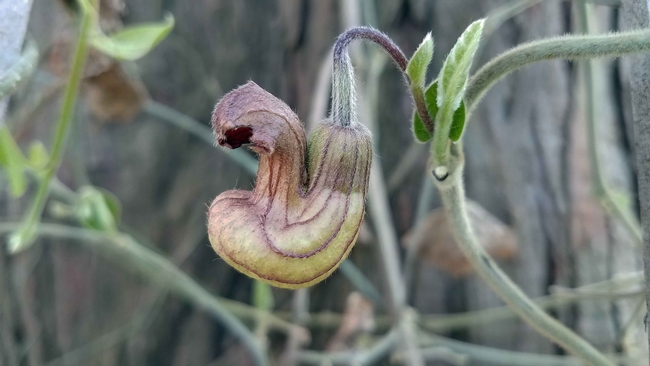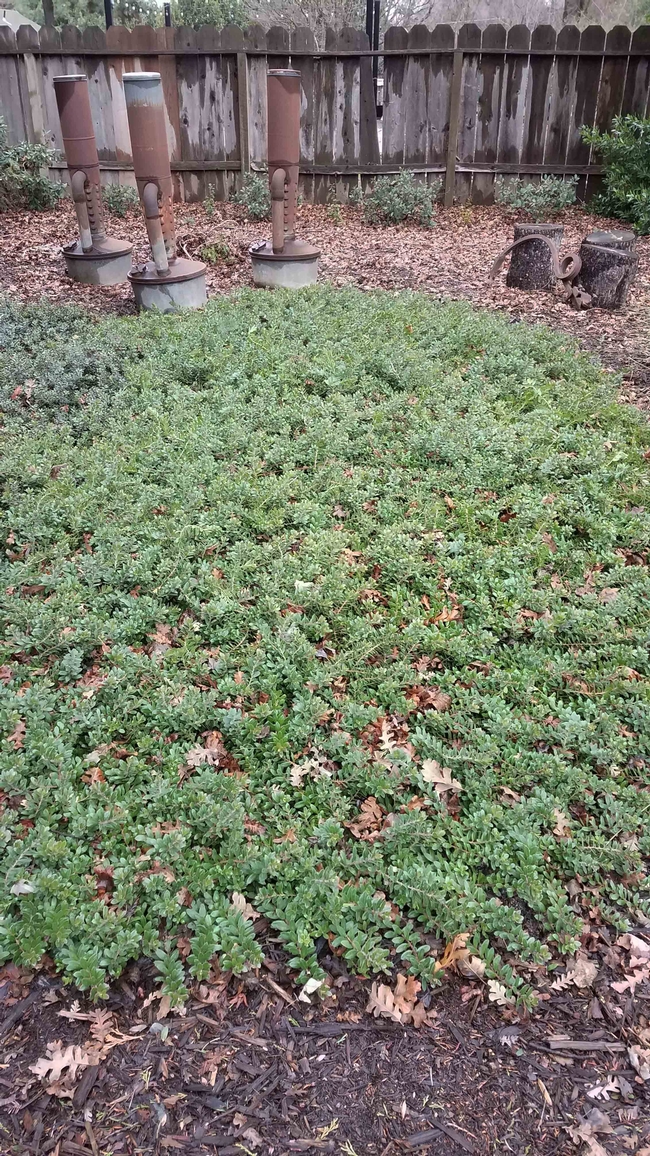Most of California has a Mediterranean-type climate with cool, rainy winters followed by hot, dry summers. Many of the plants for sale in nurseries need help to survive in this climate, and often require a lot of water during the summer. However, plants native to California (meaning that they were present prior to the arrival of European explorers and colonists) have adapted to this climate with a variety of strategies that allow them to live with no water for long periods of time. One of these strategies is to bloom and grow during the rainy season and go dormant during the hottest part of the summer.
Howard McMinn Manzanita, Las Pilitas Nursery
Howard McMinn Manzanita, Laura Kling
Another reliable manzanita for this area is the cultivar ‘Dr. Hurd.' It grows from ten to fifteen feet tall and as wide and can be pruned as a small tree. The contrast between the dark reddish bark on the spreading branches and the gray-green leaves is quite striking, becoming even more beautiful with age. White flowers bloom in the winter. ‘Dr. Hurd' prefers full sun and little summer water although it can tolerate some irrigation and heavier soil.
California Dutchman's Pipevine, J. Alosi
Carmel Sur Manzanita groundcover, J. Alosi
UC Master Gardeners of Butte County are part of the University of California Cooperative Extension (UCCE) system. To learn more about us and our upcoming events, and for help with gardening in our area, visit our website. If you have a gardening question or problem, email the Hotline at mgbutte@ucanr.edu (preferred) or call (530) 538-7201.



